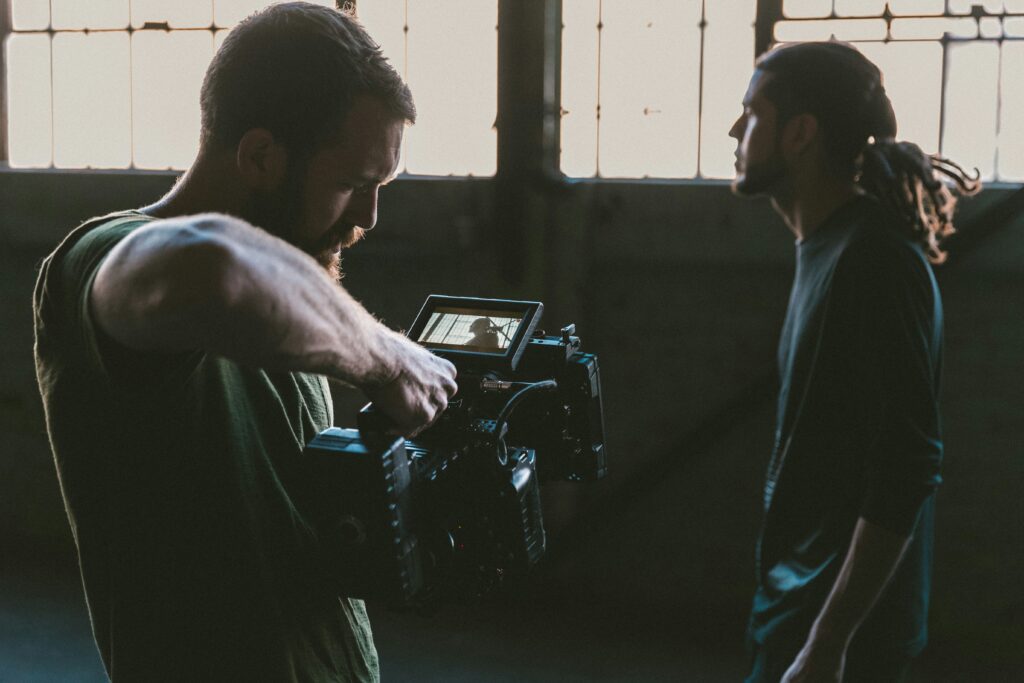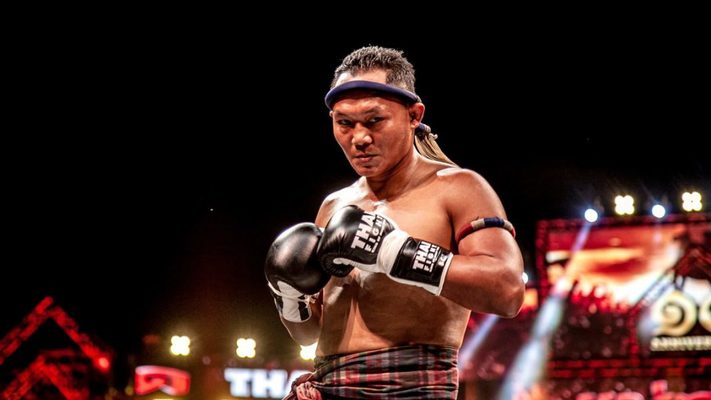The Art of Eight Limbs: An In-Depth Exploration of Muay Thai
Muay Thai, also known as “The Art of Eight Limbs”, is a martial art form and combat sport that originated in Thailand. It is a striking sport that utilizes punches, kicks, elbows, and knee strikes, making it a comprehensive and dynamic form of self-defense and fitness.
The Rich History of Muay Thai
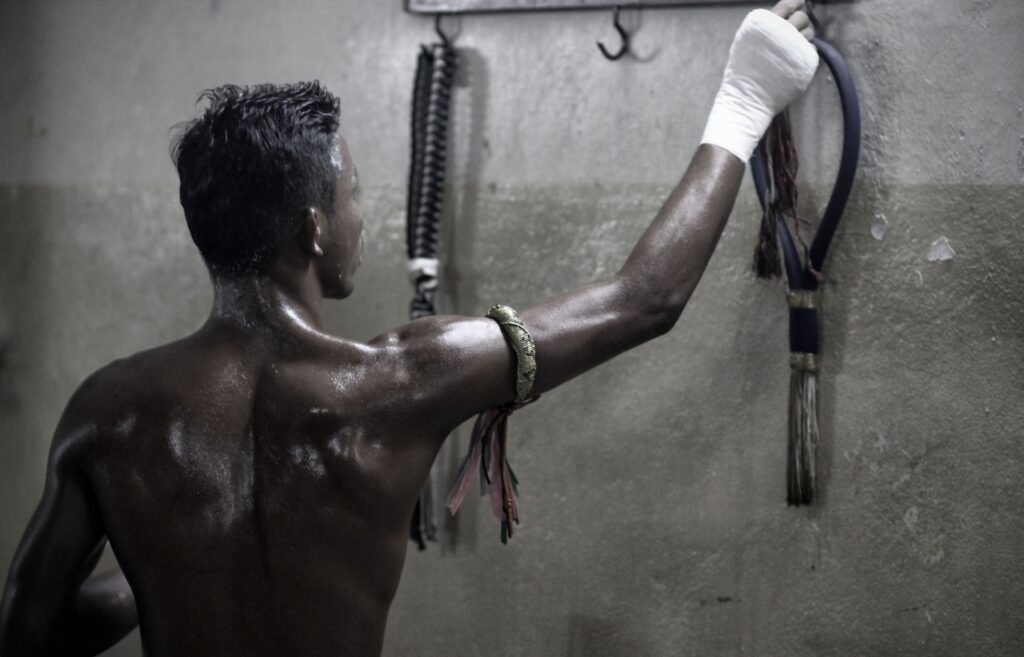
Muay Thai, also known as “The Art of Eight Limbs”, has a rich and fascinating history that is deeply intertwined with the history of Thailand itself. This martial art form has evolved over centuries, reflecting the spirit, culture, and history of the Thai people.
Origins and Evolution
The origins of Muay Thai can be traced back to the middle of the 16th century during the battles between the Burmese of the Konbaung Dynasty and the Ayutthaya Kingdom. It was during these battles that the Thai people developed a form of hand-to-hand combat best suited for the type of warfare they were engaged in. This combat style, which utilized the entire body as a weapon, was known as Muay Boran.
Muay Boran was not just a fighting technique used in wars. It was also a part of the training regimen for Thai men. Every village organized fights as a form of entertainment, a rite of passage for young men, and a way to settle disputes.
The evolution of Muay Thai was significantly influenced by King Naresuan the Great (1590-1605). He was known for his personal bravery in the field and was a skilled Muay Boran fighter. During his reign, Muay Boran was a part of the military training.
In the late 18th century, during the reign of King Prachao Sua (Tiger King), Muay Thai became a sport enjoyed by people of all social classes. The Tiger King himself was known to participate in village contests under a disguise.
The transformation from Muay Boran to modern Muay Thai began in the early 20th century during the reign of King Rama VII. It was during this period that rules were introduced, and Muay Thai became a ring sport with gloves similar to those used in boxing.
Muay Thai in the Modern World
In the modern world, Muay Thai has evolved into a competitive sport, a form of self-defense, and a great way to maintain physical fitness. It is practiced by millions of people around the world and is recognized as the national sport of Thailand.
The first formal rules for Muay Thai were established in the mid-20th century. Fights were divided into rounds, and a time limit was introduced. The traditional headband and armbands (Mongkol and Pra Jiad) were retained, and a ritual dance known as Wai Khru was performed before each match to honor the fighter’s teacher.
In the 1990s, Muay Thai saw a surge in international popularity. Many foreigners began traveling to Thailand to learn Muay Thai, and Thai trainers were invited overseas to teach. This led to the establishment of numerous Muay Thai training camps all over the world.

Today, Muay Thai is a global sport with fighters from all corners of the world. It is also a part of mixed martial arts (MMA) competitions, further increasing its popularity. The World Muay Thai Council, established in 1995, is the global sanctioning body for professional Muay Thai.
The Fundamentals of Muay Thai
Understanding the fundamentals of Muay Thai is crucial for anyone looking to practice this martial art. These fundamentals include the basic techniques, stances, and movements that every practitioner must master.
The basic stance in Muay Thai is a crucial part of the sport. It provides the balance and stability needed to execute techniques and absorb strikes from an opponent. The stance involves standing with one foot slightly in front of the other, with the weight evenly distributed between both feet. The body should be turned slightly to the side, reducing the target area exposed to the opponent.
The guard in Muay Thai is used to protect the most vital areas of the body – the head and torso. The hands are held high to protect the head, while the elbows are kept close to the body to shield the torso. The hands should be held in a position where they can quickly respond to attack or defend.
Footwork in Muay Thai is another fundamental aspect. Good footwork allows a fighter to move in and out of range quickly, evade attacks, and position themselves for strikes. It involves moving the feet in a coordinated manner, maintaining balance, and staying agile.
Finally, timing and rhythm are essential in Muay Thai. This involves understanding the right moment to attack, defend, advance, or retreat. It also involves predicting the opponent’s movements and responding appropriately.
In addition to these, there are several key principles that every Muay Thai practitioner should keep in mind:
- Always maintain your guard: Protecting yourself should be your top priority.
- Stay balanced: Whether you’re attacking, defending, or moving, you should always maintain your balance.
- Use your whole body: Muay Thai is known as the “Art of Eight Limbs” for a reason. Make sure to use your fists, elbows, knees, and shins.
- Breathe: Proper breathing is crucial for endurance and power.
- Stay calm: Keeping a clear head will allow you to make better decisions during a fight.
- Train regularly: Consistency is key in Muay Thai. The more you train, the better you’ll become.
- Respect: Show respect to your trainers, your training partners, and your opponents. Respect is a fundamental aspect of Muay Thai culture.
The Basic Stance
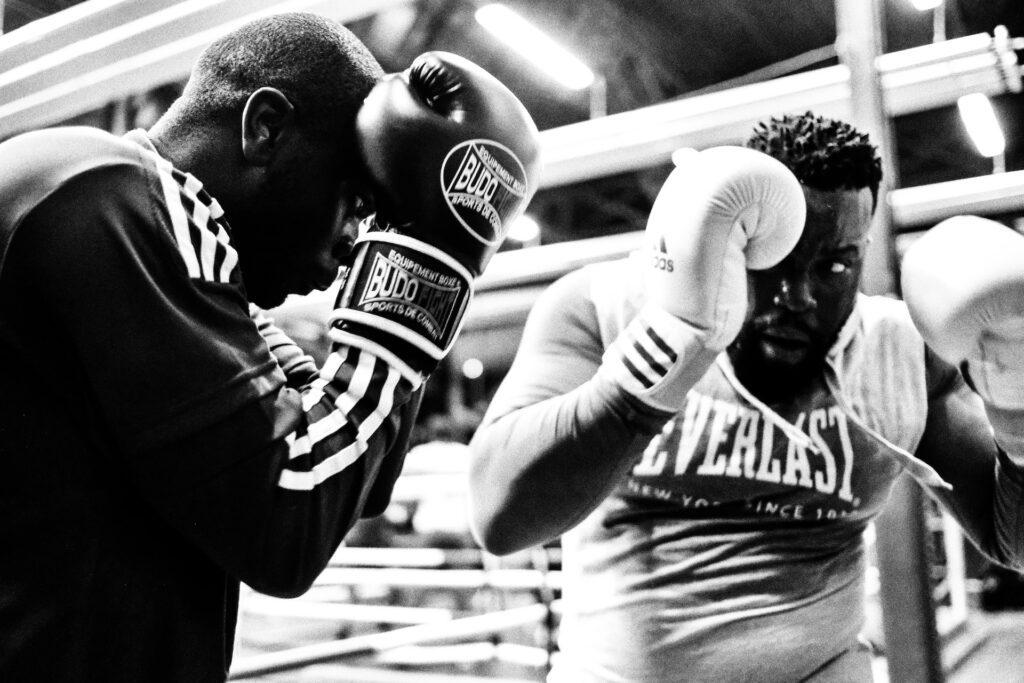
The basic stance in Muay Thai is a crucial part of the sport. It provides the balance and stability needed to execute techniques and absorb strikes from an opponent. The stance involves standing with one foot slightly in front of the other, with the weight evenly distributed between both feet. The body should be turned slightly to the side, reducing the target area exposed to the opponent.
The front foot is usually pointed straight ahead, while the back foot is slightly angled. This positioning allows for quick forward and backward movements, as well as lateral movement to either side. The knees are slightly bent to allow for quick level changes and to absorb impact from incoming strikes.
The distance between the feet should be about shoulder-width apart. This width provides a solid base for both offensive and defensive movements. If the feet are too close together, it can lead to poor balance. If they are too far apart, it can slow down movement and make it difficult to generate power for strikes.
The weight distribution in the Muay Thai stance is generally even between both feet. This balanced weight distribution allows for quick movements in any direction. It also allows the fighter to quickly shift their weight forward or backward as needed for different strikes.
In addition to the positioning of the feet and the distribution of weight, the overall body posture is also important in the Muay Thai stance. The body should be relaxed but ready, with the back straight and the shoulders slightly rounded. This posture allows for optimal breathing, movement, and power generation.
The Guard
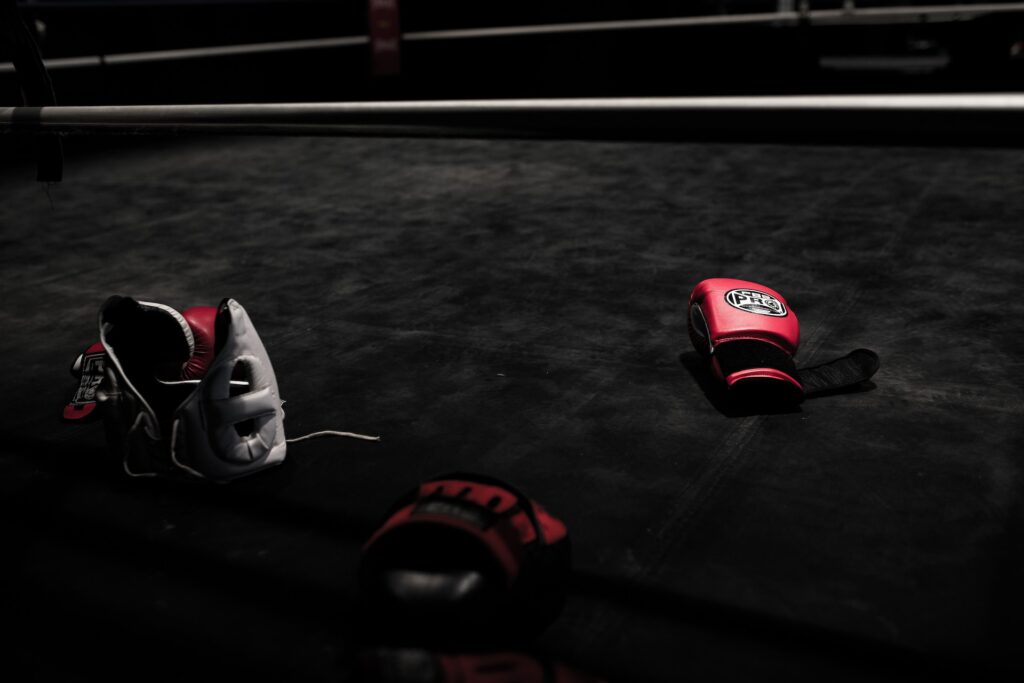
The guard in Muay Thai is used to protect the most vital areas of the body – the head and torso. The hands are held high to protect the head, while the elbows are kept close to the body to shield the torso. The hands should be held in a position where they can quickly respond to attack or defend.
The guard in Muay Thai is often referred to as a “long guard” because the hands are held out in front of the body rather than close to the face as in traditional boxing. This long guard allows the fighter to defend against a wider range of attacks, including punches, kicks, and elbow strikes.
The hands in the Muay Thai guard are held high and slightly forward. The palms can be facing towards the opponent, which allows the fighter to parry or deflect incoming strikes. The fingers should be relaxed but ready to form a fist for punching.
The elbows in the Muay Thai guard are kept close to the body to protect the ribs and internal organs. They can also be used to block kicks and knee strikes. In addition, the elbows can be used offensively in close-range combat.
The guard is not a static position. It should be dynamic and adaptable, changing based on the situation in the fight. The fighter should constantly be moving their hands, creating a moving target for the opponent and preparing to counterattack.
The Techniques of Muay Thai
Muay Thai is known as the “Art of Eight Limbs” because it utilizes the fists, elbows, knees, and shins. Each of these “limbs” has a variety of techniques associated with it.
Punches
Punches are the most commonly used weapons in Muay Thai. The main punch techniques include the straight lead punch (jab), straight rear punch (cross), uppercut, hook, overhead punch, and spinning back fist. The power behind these punches comes from the speed, shifting of weight, and rotation of the hip and shoulders.
Elbows
The elbow is one of the most effective weapons in Muay Thai. Elbow strikes can be thrown in various ways, including sideways to the head, from the top down, reverse to the chin, flying elbow from the top down, and spinning back elbow. When executed properly, elbow strikes can knock out an opponent or inflict deep cuts.
Kicks
The Muay Thai kick is a powerful weapon delivered via the shins. Kicks can be thrown to the opponent’s legs, body, arms, the back, or the head. The standard roundhouse side kick, jumping kick, spinning back kick, axe kicks, and the acrobatic cartwheel kick are some of the variations of Muay Thai kicks.
Knees
Knees in Muay Thai are typically close-range weapons used during clinching. They are often thrown to the body, especially the ribcage but also on thighs and directly to the head. Jumping knee strikes can also be devastating if landed.
Teep
The push kick, referred to as “teep” in Muay Thai, can be used defensively or offensively. It can be used to keep opponents at a distance and disrupt an advance or as a strike if delivered with power and accuracy.
Clinch
Clinching in Muay Thai is a grappling technique usually used in combination with knee and elbow strikes. Takedowns, or tripping the opponent to the ground are also allowed and performed during clinching.
Advanced Techniques in Muay Thai
As practitioners progress in their Muay Thai journey, they start learning advanced techniques. These techniques involve more complex movements and require a higher level of skill to execute.
Flying Knees
The flying knee is an advanced Muay Thai technique that involves jumping off one foot and driving the knee of the other foot into the opponent. This technique requires good timing and accuracy to execute effectively.
Spinning Elbow
The spinning elbow is another advanced technique in Muay Thai. It involves spinning around and striking the opponent with the back of the elbow. This technique is powerful and can cause significant damage if it lands.
Switch Kick
The switch kick is a deceptive technique that involves quickly switching the stance before delivering a kick. This technique is used to confuse the opponent and create an opening for the kick.
The Benefits of Muay Thai
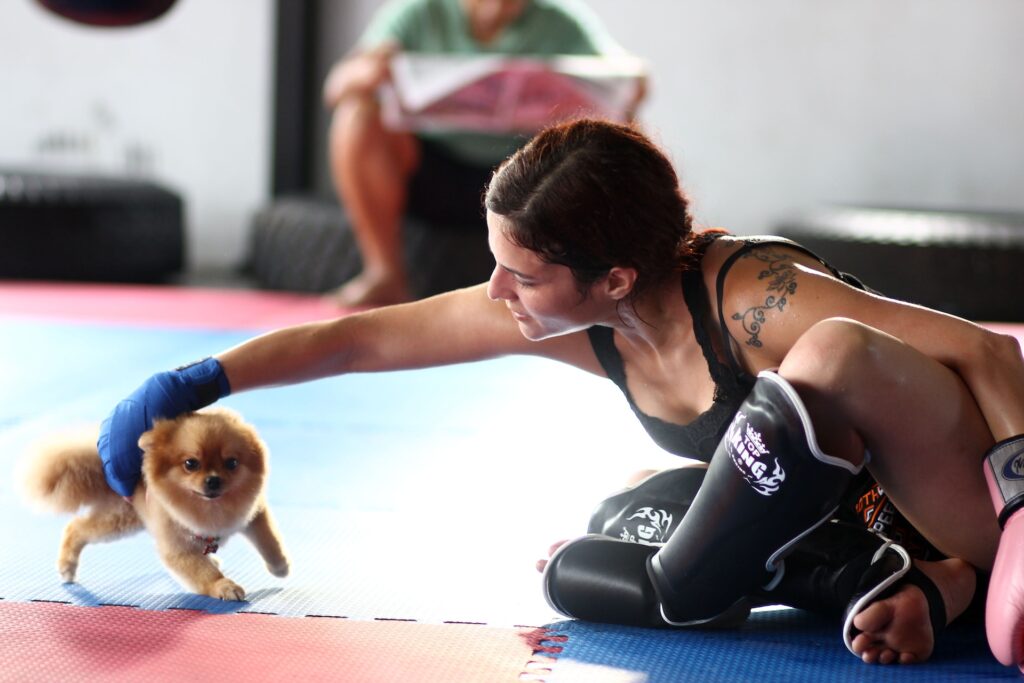
Muay Thai offers numerous benefits, making it a popular choice for people of all ages worldwide. Here are ten benefits of Muay Thai:
- Calorie Burner: A 2-hour session can burn 1000 calories, making it a great way to lose weight.
- Self-defense: Muay Thai was designed to inflict pain to the enemy while protecting the user from physical harm.
- Mental Toughness: Training Muay Thai helps to build mental fortitude by challenging limits both physically and mentally.
- Self-Confidence: Training Muay Thai makes one leaner and gets one into a better shape, boosting self-confidence.
- Endorphin Rush: Each Muay Thai training session promotes a sense of comfort and well-being which can help in stress management.
- Strengthens The Body: Regular training in Muay Thai can improve overall fitness and strengthen the body.
- Widens Social Circle: There is always a strong sense of comradeship at every Muay Thai gym.
- Fun: Muay Thai training incorporates a variety of exercises that makes training fun and effective at the same time.
- Lowers Blood Pressure: As a cardio-intensive sport, regular training in Muay Thai can reduce blood pressure and strengthen the heart.
- Easy to learn: Muay Thai is a stand-up striking style that was developed to hurt the opponent in the most efficient way.
The Journey to Mastery in Muay Thai
Becoming proficient in Muay Thai requires dedication, discipline, and consistent training. The journey to mastery in Muay Thai is not a quick or easy one, but it is a rewarding one. It involves developing physical skills, mental toughness, and a deep understanding of the principles and strategies of the sport.
The first step in this journey is learning the basic techniques and principles of Muay Thai. This includes understanding the basic stance, guard, footwork, and techniques such as punches, kicks, knee strikes, and elbow strikes. It also involves learning the rules of the sport and the etiquette of the training gym.
Once the basics are mastered, the next step is to start sparring. Sparring is a form of training where practitioners fight each other using their Muay Thai skills. It is a crucial part of training because it allows practitioners to apply their skills in a controlled environment and gain experience in fighting.
As practitioners progress in their training, they start learning more advanced techniques and strategies. They also start training for longer periods and at higher intensities. This is where the physical and mental challenges of Muay Thai really start to become apparent.
Despite these challenges, it is important to remember that the journey to mastery in Muay Thai is not a race. It is a personal journey that each practitioner takes at their own pace. The goal should not be to become the best, but to become better than you were yesterday.
Training Regimen
A typical Muay Thai training regimen is designed to develop all the physical attributes needed for the sport, including strength, power, speed, endurance, agility, and flexibility. It also involves developing technical skills, tactical understanding, and mental toughness.
A typical training session might start with a warm-up, which could include jogging, skipping rope, or shadow boxing. The warm-up is followed by technique drills, where practitioners work on their punches, kicks, knee strikes, and elbow strikes. These drills can be done on bags, pads, or with a partner.
After the technique drills, practitioners usually do pad work with a trainer. This involves performing combinations of techniques on the trainer’s pads. Pad work is a great way to develop power, speed, and accuracy, and it also helps to improve timing and rhythm.
Next is sparring, where practitioners get to apply their skills in a controlled fighting situation. Sparring is usually done with protective gear and under the supervision of a trainer. It is a crucial part of training because it provides valuable fighting experience.
The training session might end with some clinching work, where practitioners work on their grappling skills, and conditioning exercises, which could include push-ups, sit-ups, squats, or other exercises.
Finally, stretching is done to cool down and improve flexibility. This is an important part of training because it helps to prevent injuries and improve performance.
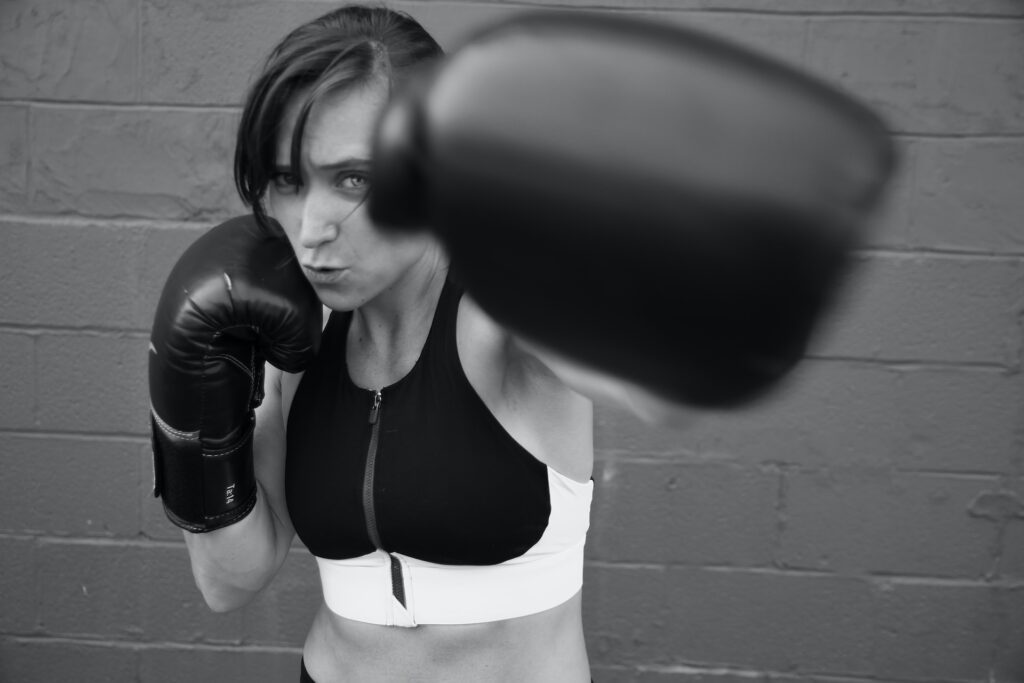
Importance of Rest and Recovery
While training is important in Muay Thai, so is rest and recovery. Training hard without giving the body time to recover can lead to overtraining, which can result in decreased performance, increased risk of injury, and other negative health effects.
Rest and recovery are important for several reasons. First, they allow the body to repair the damage caused by intense training. This includes repairing muscle tissue, replenishing energy stores, and restoring fluid balance.
Second, rest and recovery allow the body to adapt to the stresses of training. This is when the real gains in performance are made. Without adequate rest and recovery, the body cannot fully adapt to the training, and the benefits of the training will be reduced.
There are several strategies that can be used to enhance rest and recovery. These include getting enough sleep, eating a healthy diet, staying hydrated, using relaxation techniques, and taking rest days.
Sleep is particularly important for recovery. It is during sleep that the body produces most of its growth hormone, which is crucial for repairing and building muscle tissue. Lack of sleep can also affect the immune system, making it harder for the body to recover from training.
Dress Code for Muay Thai Training
For training, Muay Thai shorts are worn and men usually go topless due to the heat in Thailand. Outside of Thailand, Muay Thai shorts are often paired with an exercise tank top or t-shirt for both men and women.
Muay Thai shorts are designed to be short and wide to allow for maximum freedom of movement. They are typically made of satin or nylon, which are lightweight materials that help to keep the fighter cool. The waistband is usually elastic or drawstring to ensure a secure fit.
In addition to the shorts, Muay Thai practitioners also wear hand wraps and gloves for training. The hand wraps are used to protect the hands and wrists from injury, while the gloves are used to protect both the fighter and their training partners.
For sparring and fights, additional protective gear is worn. This includes a mouthguard to protect the teeth and jaw, a groin guard to protect against low blows, and shin guards to protect the shins during kicks and checks.
In terms of footwear, Muay Thai is usually practiced barefoot. This allows for better grip on the mat and more natural movement of the feet.
Finally, it’s important to note that cleanliness and hygiene are very important in Muay Thai. Practitioners should ensure that their training clothes are clean and that they maintain good personal hygiene to prevent the spread of infections.
Wai Kru Ram Muay: The Pre-Fight Ritual
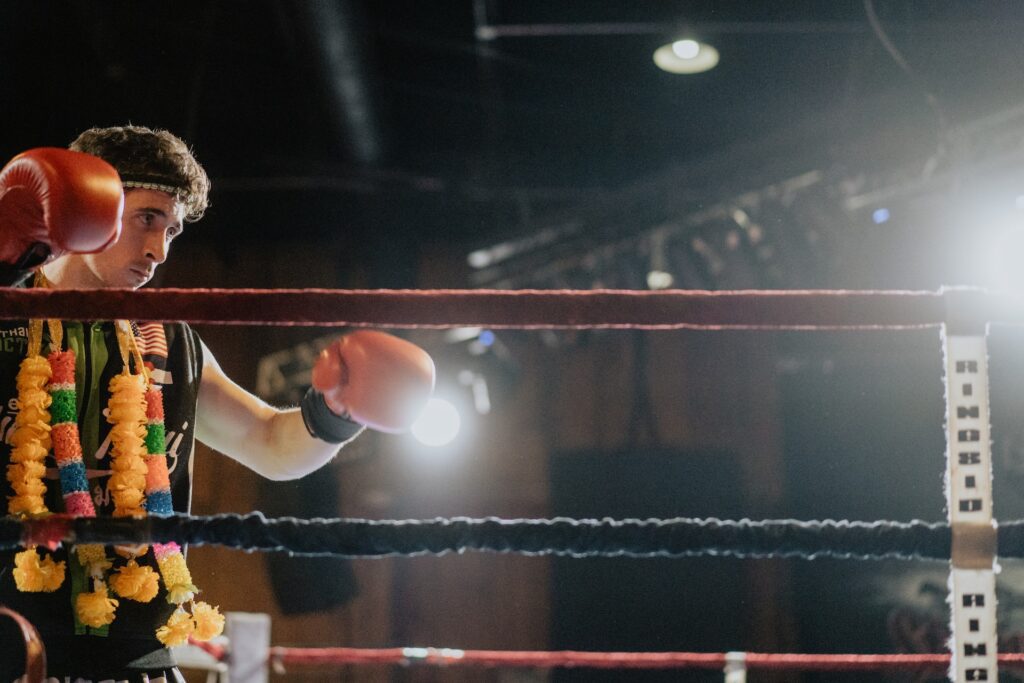
One of the most distinctive aspects of Muay Thai is the pre-fight ceremony known as Wai Kru Ram Muay. This ceremonial ritual takes place in the ring, accompanied by traditional rhythmic Thai music known as Sarama.
The Wai Kru Ram Muay serves several purposes. First, it is a way for the fighters to pay respect to their teachers and ancestors. The term “Wai Kru” means to pay homage to the teacher, while “Ram Muay” means boxing dance.
Second, the Wai Kru Ram Muay is a way for the fighters to warm up and stretch before the fight. The movements in the Ram Muay are slow and rhythmic, helping the fighters to calm their nerves, focus their minds, and prepare their bodies for the fight.
Third, the Wai Kru Ram Muay is a way for the fighters to show their style and grace. Each fighter’s Ram Muay is unique and reflects their personal style and the style of their training camp.
The Wai Kru Ram Muay typically begins with the fighter circling the ring three times before kneeling and bowing three times to show respect to their religion. The fighter then performs their unique Ram Muay, which can include a variety of movements such as bows, dances, and shadow boxing.
The Wai Kru Ram Muay is a beautiful and important part of Muay Thai that showcases the sport’s rich history and cultural significance.
Muay Thai vs Other Combat Sports
Muay Thai is a unique combat sport that differs from traditional boxing, MMA, BJJ, and kickboxing. It is most differentiated from other combat sports by the use of elbows, knees, push kicks (teeps), and the clinch.
In traditional boxing, only punches are allowed, and the fighters wear larger, more padded gloves. In Muay Thai, punches are just one of the many techniques that can be used. The gloves in Muay Thai are smaller and less padded, allowing for more damaging strikes.
MMA, or mixed martial arts, includes techniques from a variety of martial arts, including Muay Thai. However, MMA also includes grappling techniques on the ground, which are not a part of Muay Thai. In Muay Thai, the fight is stopped if the fighters go to the ground.
BJJ, or Brazilian Jiu-Jitsu, is a martial art that focuses on ground fighting and submission holds. It is very different from Muay Thai, which is a stand-up striking sport. While BJJ practitioners spend a lot of time training on the ground, Muay Thai practitioners spend their time training on their feet.
Kickboxing is probably the most similar sport to Muay Thai, as it also involves punches and kicks. However, kickboxing does not typically include elbow and knee strikes, and the rules around clinching are different. In Muay Thai, the clinch is a crucial part of the fight, and fighters can use it to land knee strikes or to throw their opponent to the ground.
In conclusion, while Muay Thai shares some similarities with other combat sports, it is unique in its use of the “eight limbs” – the fists, elbows, knees, and shins. This, along with its rich history and cultural significance, makes Muay Thai a unique and fascinating sport.
FAQ
Q: What is Muay Thai? A: Muay Thai is a martial art form and combat sport that originated in Thailand. It is a striking sport that utilizes punches, kicks, elbows, and knee strikes.
Q: How often should I train Muay Thai? A: The key to progress in Muay Thai is to train as regularly and frequently as you can. Professional fighters in Thailand train twice daily, six days a week.
Q: What are the benefits of Muay Thai? A: Muay Thai offers numerous benefits, including weight loss, self-defense, mental toughness, self-confidence, stress management, body strengthening, socializing, fun, blood pressure control, and it’s easy to learn.
Q: What is the dress code for Muay Thai training? A: For training, Muay Thai shorts are worn and men usually go topless due to the heat in Thailand. Outside of Thailand, Muay Thai shorts are often paired with an exercise tank top or t-shirt for both men and women.
Q: What is Wai Kru Ram Muay? A: Wai Kru Ram Muay is a pre-fight ceremony in Muay Thai that takes place in the ring, accompanied by traditional rhythmic Thai music known as Sarama.
Q: How does Muay Thai differ from other combat sports? A: Muay Thai is most differentiated from other combat sports by the use of elbows, knees, push kicks (teeps), and the clinch.
Join us at Thaiboxingpros and embark on your Muay Thai journey today!



